|
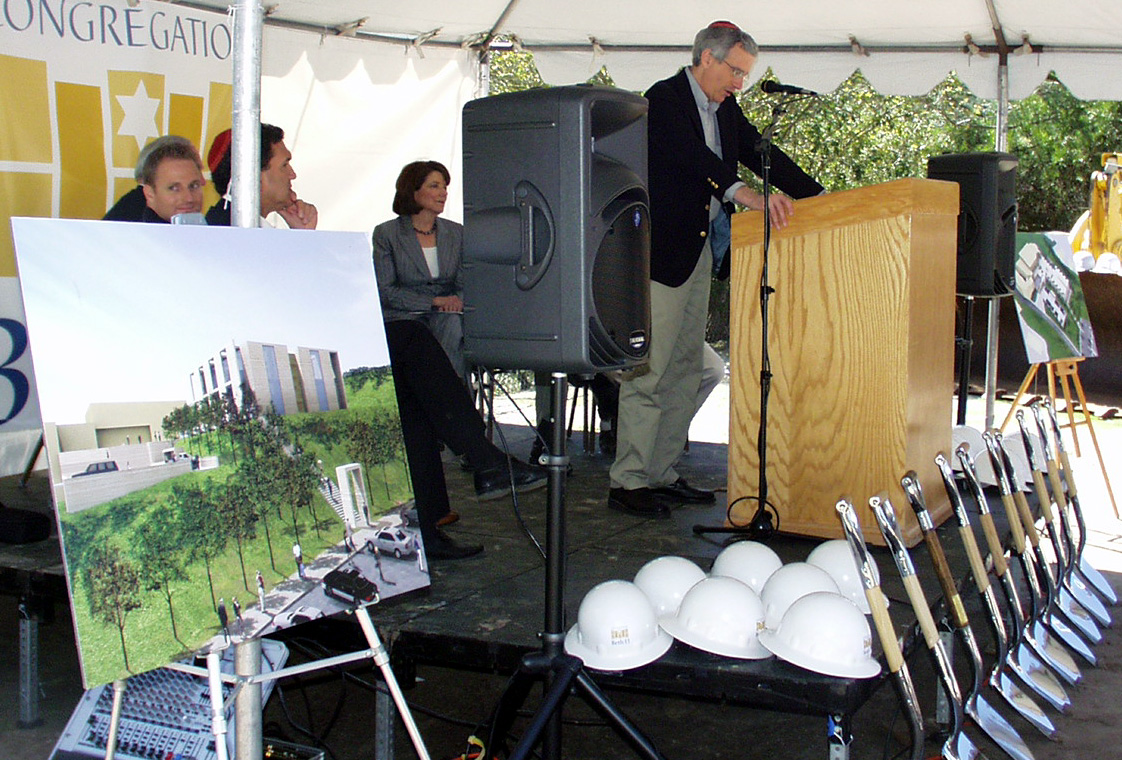
Architect's renderings, hard hats and shovels frame stage
at groundbreaking ceremony at Congregation Beth El in La Jolla. As
Rabbi Philip Graubart speaks, Congresswoman
Susan Davis (D-San Diego), groundbreaking chairman Gary Ravet (hand to chin)
and building chairman Ryan Stone (facing camera) listen to his description of
the planned sanctuary.
By Donald H. Harrison
LA JOLLA, Calif. — For 30 years Congregation Beth El has been conducting
services in temporary sanctuaries on a hillside in the La Jolla section of San
Diego, with its members hoping, planning, and sometimes arguing for the day when
they could build a permanent sanctuary. So, although he gave the shortest speech
at official groundbreaking ceremonies for that sanctuary on Sunday, April
9, San Diego Mayor Jerry Sanders received the loudest and longest cheers
when he delivered this line:
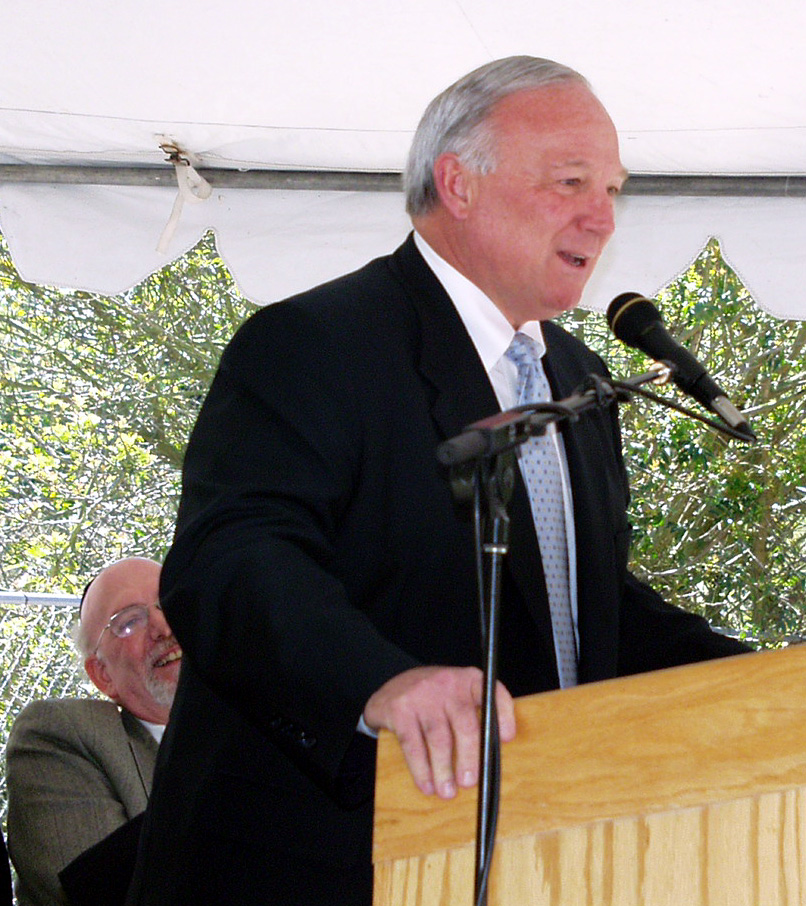 "I
happen to know the reason I am here today. I have been given that reason
by both Rod and Ryan. It is not to say nice words, not to do any of that; it is
to speed the building permits. So that is
my commitment as I leave today; your permits will be signed, sealed and
delivered in a much quicker manner than normal!" "I
happen to know the reason I am here today. I have been given that reason
by both Rod and Ryan. It is not to say nice words, not to do any of that; it is
to speed the building permits. So that is
my commitment as I leave today; your permits will be signed, sealed and
delivered in a much quicker manner than normal!"
Ryan Stone is the chairman of the Conservative
congregation's building committee, and Rod Stone, his father, held the same
position about 25 years ago, when the congregation was preparing to move from a
small house at the top of its hill into the multipurpose social hall farther
down the hill which has served as the temporary sanctuary ever since. The
permanent sanctuary will be built even lower on the hill at 8660 Gilman Drive.
Mayor Jerry Sanders draws a laugh from Paul Schultz
There was a theme of fathers and sons running throughout the morning ceremony.
Alan Viterbi, the congregation's president, told how the current building
campaign was assured when he and Ryan Stone "met with Jerry
Katzin, Rod Stone and my dad (Andrew
Viterbi). Their generosity and commitment gave us the strength to embark on
this project."
Later in the program, longtime congregant Paul Schultz said not long after the
congregation moved from the Clairemont area of San Diego, where it had started
in 1957, to its La Jolla campus, he approached Rabbi Alex Graubart
in Cleveland about becoming the congregation's spiritual leader.. However, the
rabbi declined, explaining he didn't want to move because his son still was in
high school. The son, Philip Graubart, went on to become a rabbi himself, and
for the last four years has been occupying the pulpit once offered his father.
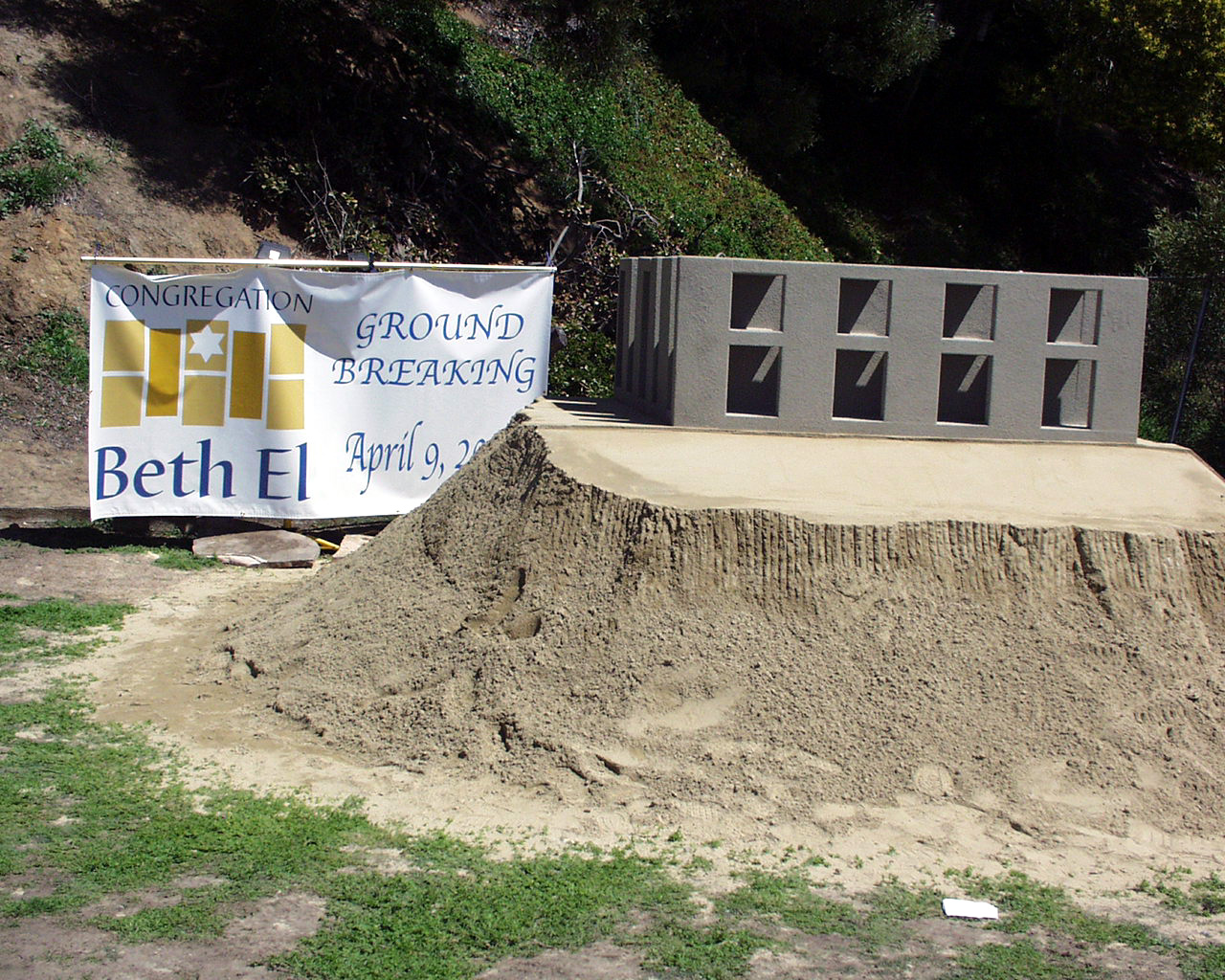 The
mood at the ceremonies alternated behind the light-heartedness felt by a family,
finally achieving its goals, and the seriousness of the mission set out for the
sanctuary—to be not only a place of prayer for the members of Congregation
Beth El but, through its interior architecture, to be a place that will help to
recapture the world of Eastern European Jewry who perished in the Holocaust. The
mood at the ceremonies alternated behind the light-heartedness felt by a family,
finally achieving its goals, and the seriousness of the mission set out for the
sanctuary—to be not only a place of prayer for the members of Congregation
Beth El but, through its interior architecture, to be a place that will help to
recapture the world of Eastern European Jewry who perished in the Holocaust.
The building committee worked with architect Stanley Saitowitz of San Francisco
to design a sanctuary with a modern exterior. Rabbi Graubart said the interior
will contain " most of the elements of a classical Eastern European
synagogue … and those synagogues
Sand sculpture depicts future sanctuary building
represent not just spiritual places of worship, but a whole culture, Ashkenazi
culture, the culture of Yiddish-speaking Jews, a great civilization that
produced art and language and architecture and music and totally unique
spiritual expressions."
"That whole civilization was murdered in
just 12 years between 1933 and 1945," Rabbi Graubart said. "When we
build this building, and we build our new walls, all of the stories of those
Jews, their shtetls and relationships, their weddings and funerals, their
music, their bubbemeisers, their wisdom, will infuse this new building.
The stones ... will be filled with their achievements and their sorrows."
Ryan Stone said when the building committee members first began their work eight
years ago, they met with numerous architects but were not inspired by any of
their visions. However, while waiting for one such meeting to begin, Stone said
he leafed through an architectural magazine which had a "pictorial of the Kyoto Museum designed by the legendary I.
M. Pei And this building is
unbelievable. I. M Pei took traditional Japanese theme – the old pagoda
style – and used modern building forms with glass, concrete and stainless
steel and just designed something magnificent."
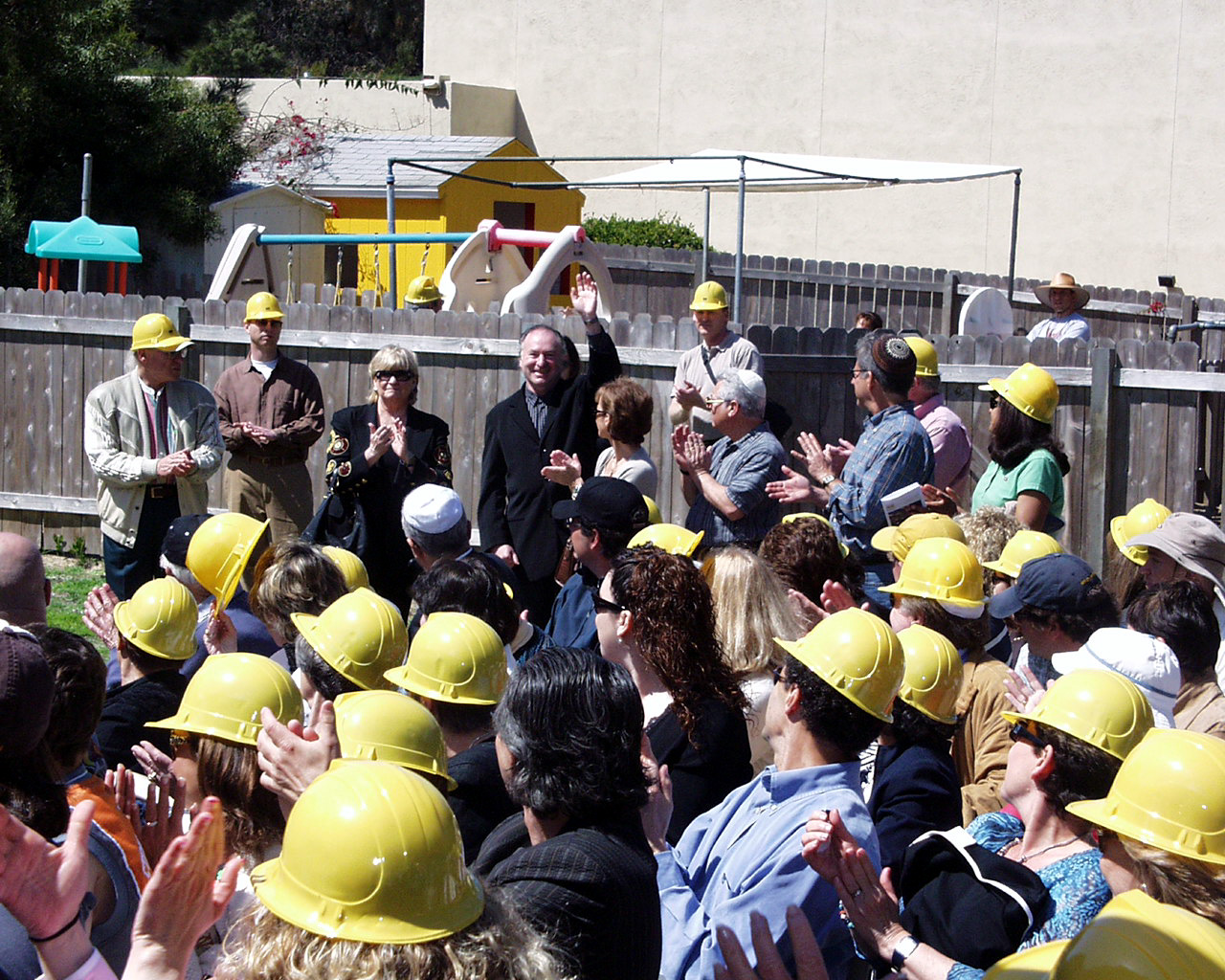 Stone said he decided to write to Pei to
ask if modern materials could be used for a sanctuary building that would
evoke Eastern European synagogue themes. He was surprised when Pei personally
telephoned to encourage him to go forward with the idea. Saying that
he had retired from his practice, Pei put Stone in touch with a colleague who
recommended Saitowitz, a San Francisco architect. Stone announced to the
crowd that Saitowitz is soon to receive an award for his body of
work in a White House ceremony from the Smithsonian
Institution's Cooper-Hewitt National Design Museum. Stone said he decided to write to Pei to
ask if modern materials could be used for a sanctuary building that would
evoke Eastern European synagogue themes. He was surprised when Pei personally
telephoned to encourage him to go forward with the idea. Saying that
he had retired from his practice, Pei put Stone in touch with a colleague who
recommended Saitowitz, a San Francisco architect. Stone announced to the
crowd that Saitowitz is soon to receive an award for his body of
work in a White House ceremony from the Smithsonian
Institution's Cooper-Hewitt National Design Museum.
Architect
Stanley Saitowitz acknowledges introduction
Saitowitz, standing at the back of a crowd that was furnished with trowels and
yellow plastic "soft hats" for the occasion, did not speak during
yesterday's ceremonies, but happily waved to the crowd.
Following the speechmaking, in which Congresswoman Susan Davis (D-San Diego) and
groundbreaking event chairman Gary Ravet also participated, the speakers and
major donors to the congregation's capital campaign were called forward to turn
a few shovels full of dirt. Before they did so, they recited the shehechiyanu
prayer, thanking God for bringing them to this moment.
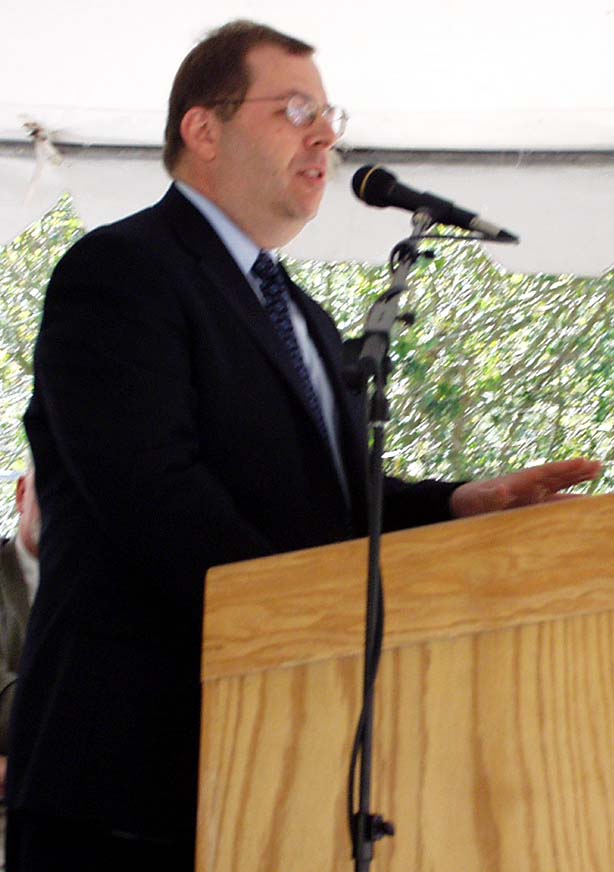
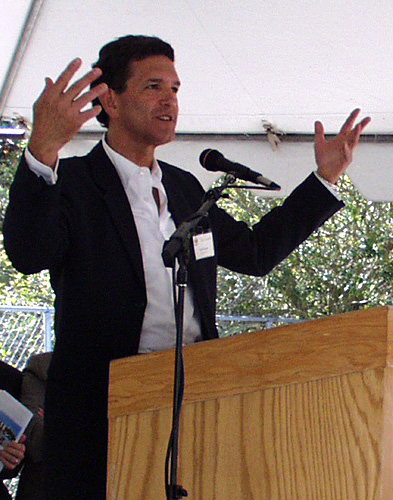
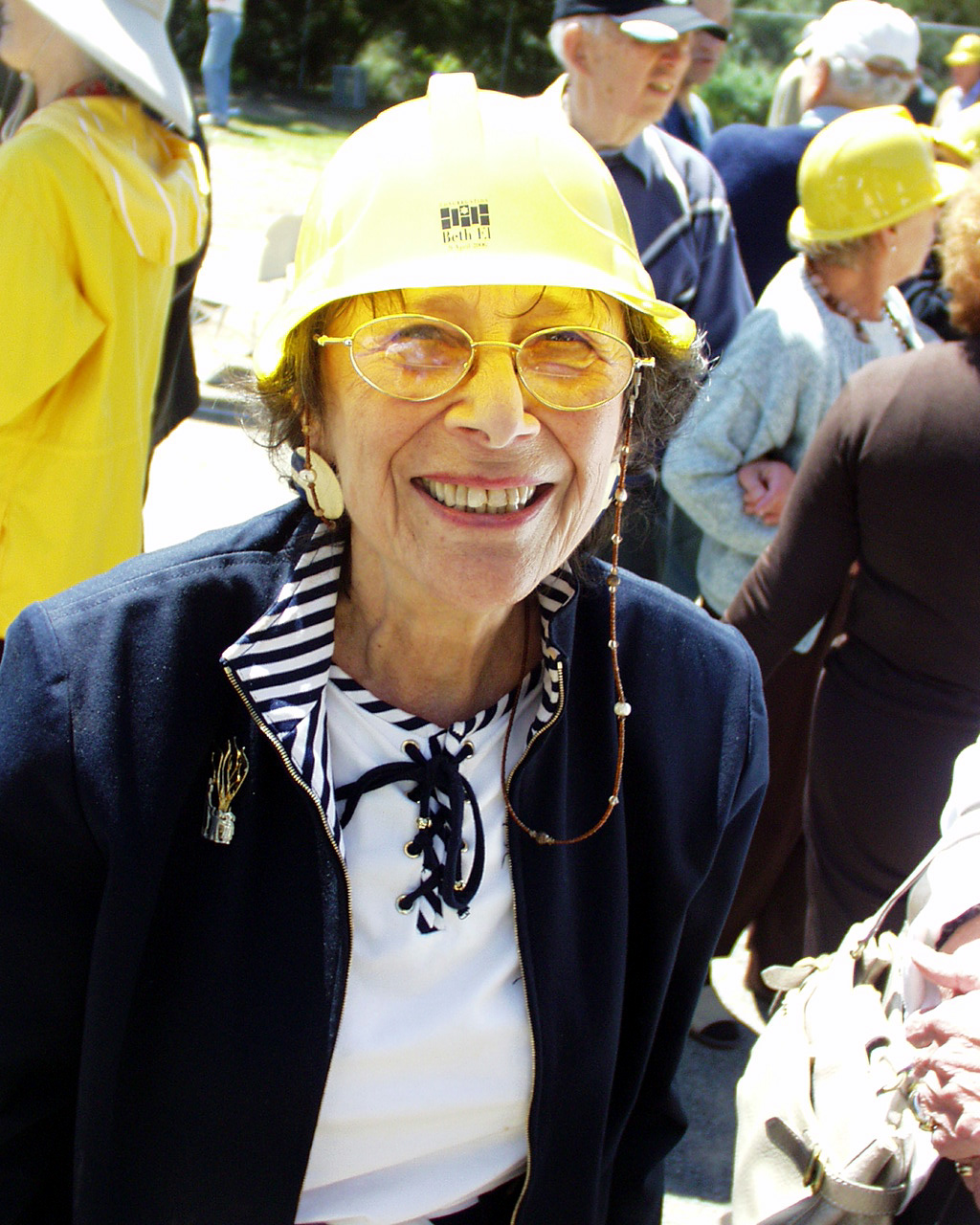
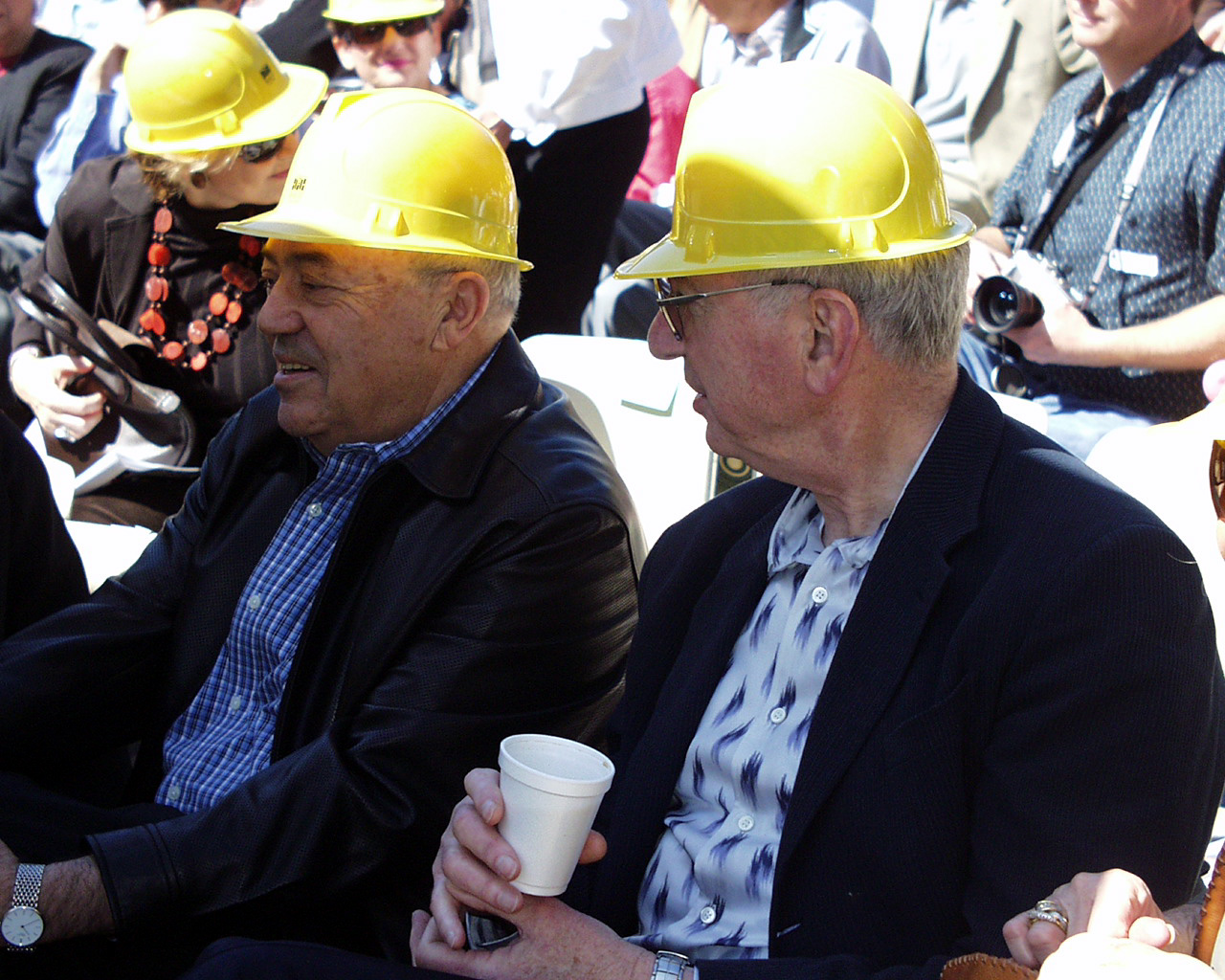
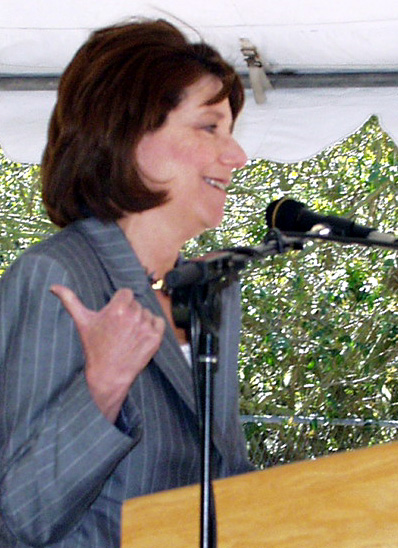
From
left, Beth Israel President Alan Viterbi; Gary Ravet, groundbreaking chair;
congregant Teedie
Appelbaum in hard-hat; Qualcomm co-founders Irwin
Jacobs and Andrew Viterbi chat during ceremony, and Congresswoman
Susan Davis (D-San Diego) makes a point.
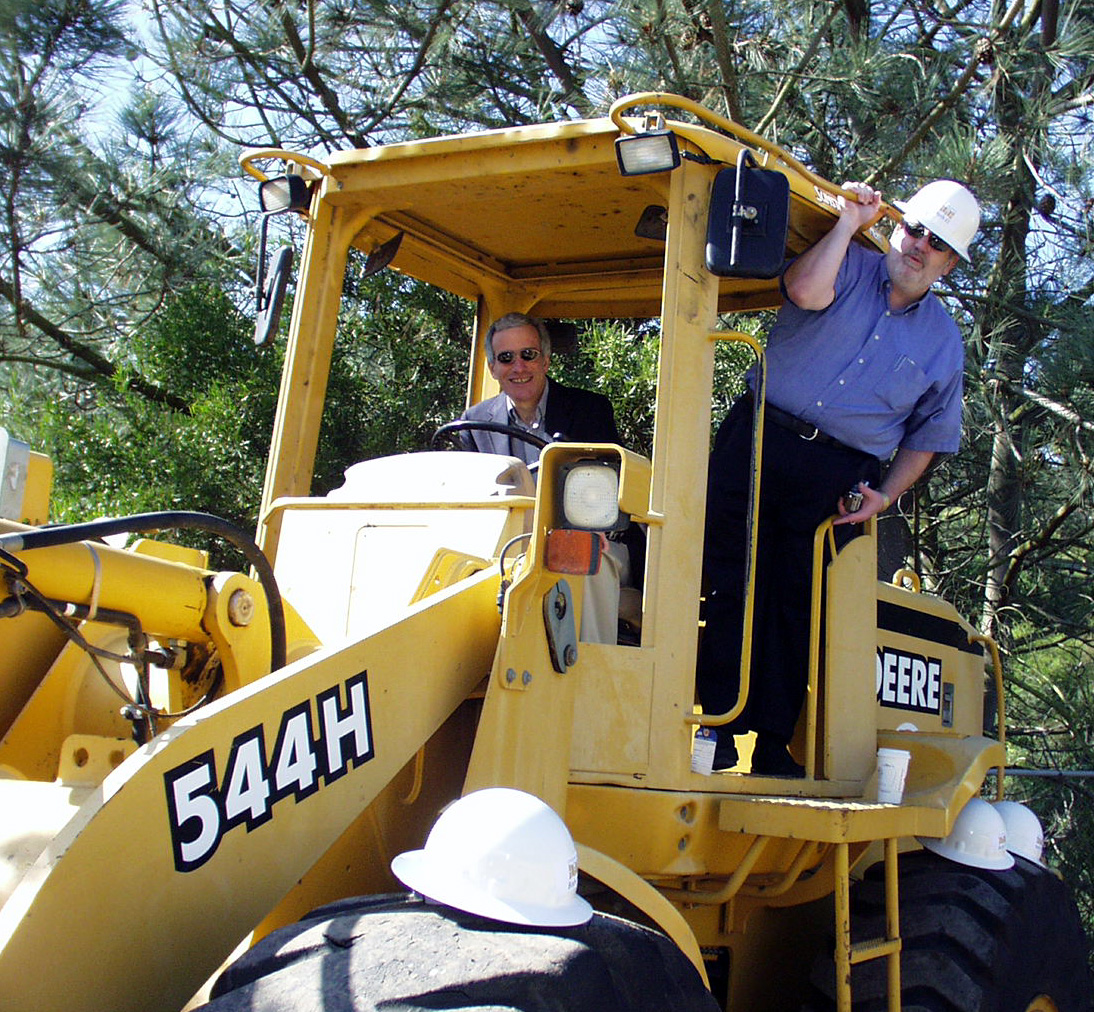 Andy
Hoffman, the congregation's executive director who had chosen a seat atop a
giant earth moving machine to watch the ceremony, said the shoveling was taking
place on the exact spot where the future Aron Kodesh, or Holy Ark,
would be placed. He said this Holy Ark won't be a piece of
furniture, but rather will be an 8-by-8-foot room, which will be revealed by a
roll-up paneled door. The sefrei Torah will be arrayed in such a way
within the Holy Ark hat they will envelop any person who steps
inside. Andy
Hoffman, the congregation's executive director who had chosen a seat atop a
giant earth moving machine to watch the ceremony, said the shoveling was taking
place on the exact spot where the future Aron Kodesh, or Holy Ark,
would be placed. He said this Holy Ark won't be a piece of
furniture, but rather will be an 8-by-8-foot room, which will be revealed by a
roll-up paneled door. The sefrei Torah will be arrayed in such a way
within the Holy Ark hat they will envelop any person who steps
inside.
Similarly, congregants in their seats will have the sense of being enveloped by
Torah because on twelve 30-foot windows around the sanctuary, passages
from the Torah will be engraved. Hoffman said that among the passages
already designated by Rabbi
Rabbi
Graubart and Exec Director Andy Hoffman aboard earthmover
Graubart are the stories of the Creation, Noah and the Ark, Abraham, Jacob
at Beth El (the incident for which the synagogue was named), Joseph in
Egypt, the Exodus, the giving of the Torah at Mt. Sinai, the spies scouting out
Canaan, excerpts from Deuteronomy including the Sh'ma Yisroel prayer, and
Moses' farewell.
Asked if the Hebrew name of God presented any special concerns, Hoffman reported
that Rabbi Graubart researched the issue and determined that so long as
the name never was erased, there was no halachic problem. He said
because the windows will be etched, there is no problem of sunlight causing the
name of God to fade.
It has not been decided whether to configure the sanctuary with 380 or 420
seats, Hoffman said, but there is plenty of time to decide before Rosh Hashanah
of 2007, when the sanctuary is expected to come into use. The executive director
said the sanctuary was designed for Shabbat services, rather than for High
Holiday services, the latter of which will continue to be conducted in the
Jacobs Social Hall.
There will be a plaza between the Jacobs Social Hall. and the new sanctuary, for
which there is a $1 million "naming opportunity." This plaza will have
an outdoor chuppah "because we expect that outdoor weddings on the
plaza, using the sanctuary and the community hall , will be a very attractive
feature," Hoffman said.
|

